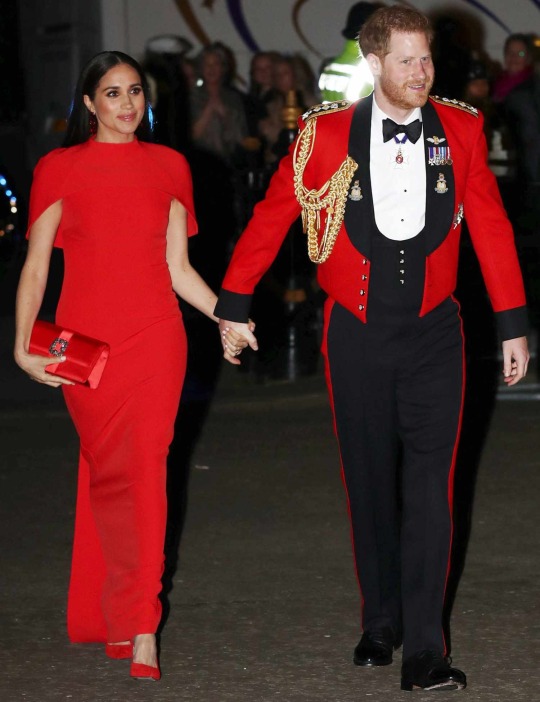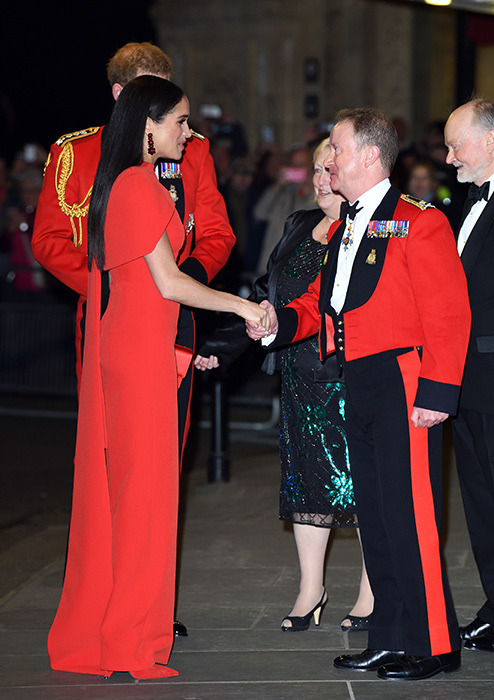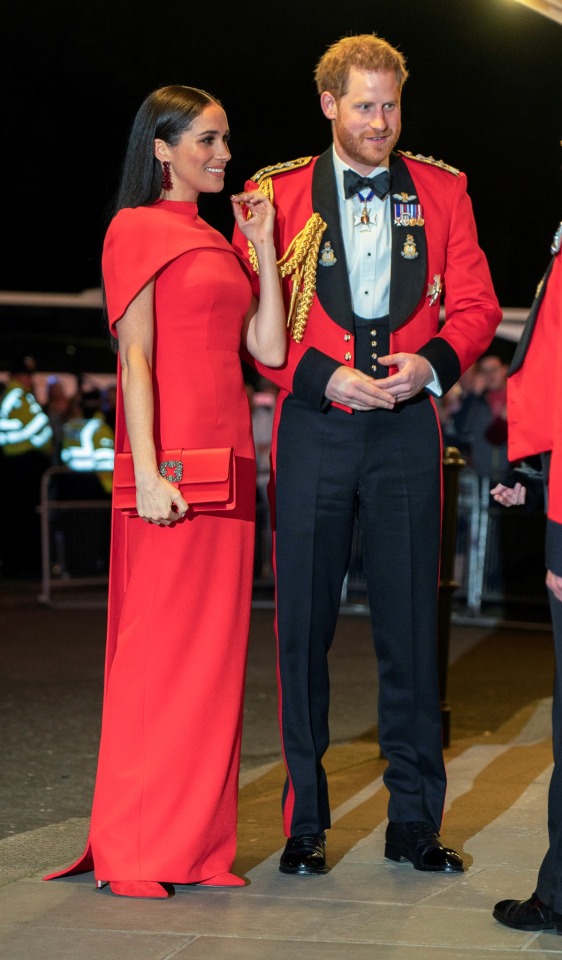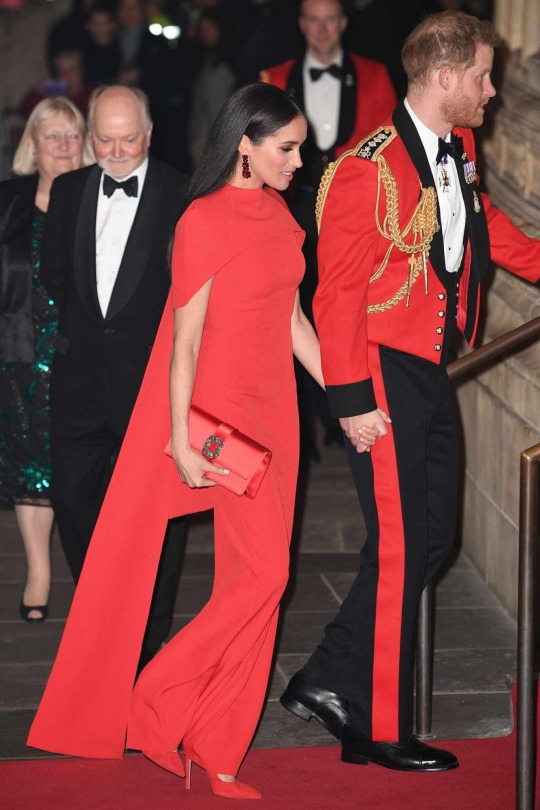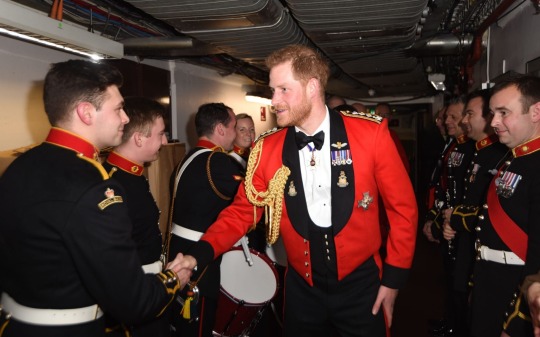#royal marines
Text
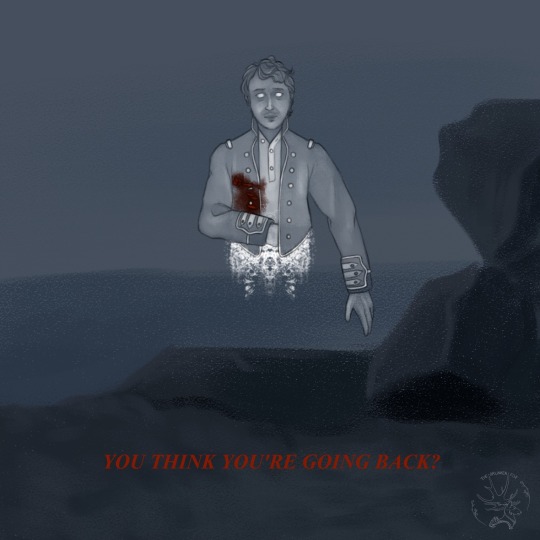
Private William Pilkington
You think you’re going back?
#angry little man full of rage like a chihuahua#william pilkington#the terror#my art#the terror ghosts#royal marines#rip my guy you were assigned the Wilhelm scream
80 notes
·
View notes
Text
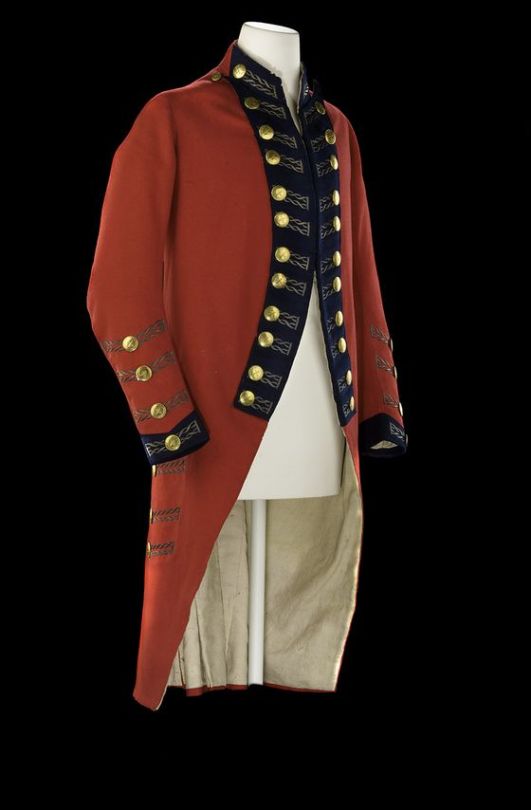
Royal Marine's Dress Coat, Pattern 1782
This Royal Marines dress coat of a Major General Arthur Tooker Collins (1718-93), is constructed of red wool with cuffs and lapels faced with blue.
254 notes
·
View notes
Text
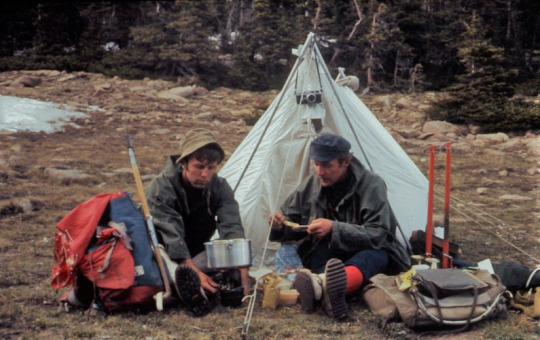
A couple Royal Marine Sergeants test out camping equipment while exploring the Rockies
British Columbia
1974
#vintage camping#campfire light#canada#rocky mountains#camping#hiking#royal marines#scottish#fishing#1970s
160 notes
·
View notes
Text
No one drips like the Royal Marines
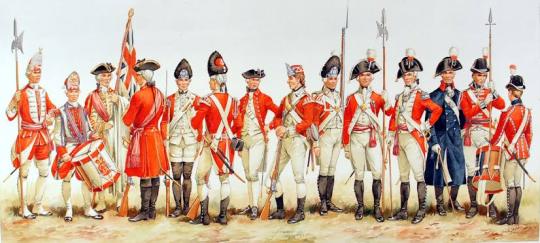


#royal marines#well#except the light infantry and rifle regiments#but that goes without saying#napoleonic wars#victorian#georgian#military history#history#british
80 notes
·
View notes
Text

Hawker Hunter. Coming in fast overhead in support of Royal Marines in the Radfan region during the Aden Emergency. Yemen. March 1967
57 notes
·
View notes
Text

In early April, 1982, the P&O Liner, Canberra, was on a Mediterranean cruise when her captain, Dennis (DJ) Scott-Masson, received orders to put in at Gibraltar. He there received instructions to proceed immediately to Southampton under Admiralty orders. (It's unclear exactly where the poor passengers were kicked off).
Within a week, and after a hasty refit which included the installation of helipads, the Canberra set sail for the Falklands, with a reduced volunteer crew and, depending on the source, either 2 000 or 3 000 commandoes of the Royal Marines and Parachute Regiment.
She was taken close inshore in San Carlos Water on May 21st, the first of three occasions, to disembark the troops.
Captain Scott-Masson was later interviewed for the ABC Australia documentary series, Liners: Ships of Destiny. He recalled;
"...Our major fear was that we would be hit by bombs or an Exocet, the ship’s superstructure was built of aluminium, and fire would have been our worst hazard, and that is what we worried about..."
He also conceded that the extreme danger did slightly disrupt shipboard routine;
"...There was one night we didn’t have a drink with dinner, didn’t have wine with dinner... was the night we went into San Carlos..."
The QEII was also on troopship duties, but remained well outside of the battle zone, her own contingent of Guards, Gurkhas and Blues and Royals shuttled from her position off South Georgia in the Canberra.
A contributor to Liners: Ships of Destiny explained why;
"...(The QEII) couldn’t really be exposed to danger, the thought of risking losing the ship that had the same name as the Sovereign was more than the politicians could bear. The fact that the Canberra was exposed didn’t really matter, after all it was only the capital of Australia..."
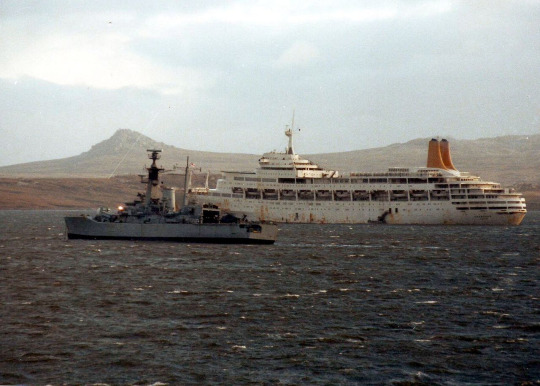
The Canberra and 2500 troops returned safely to Southampton on July 11th, welcomed by around 250 000 people.

The Canberra was paid off in 1997, after 36 years of service.
Captain Scott-Masson passed away in 2010, aged 81.
Captain Scott-Masson's son is the actor, William Scott-Masson


Additional background from Royal Marines History and https://www.peterghore.co.uk
#falklands war#maritime history#social history#ocean liners#royal marines#military history#1980s#margaret thatcher#parachute regiment#gurkha#guards#blues and royals#cruise ship
85 notes
·
View notes
Text
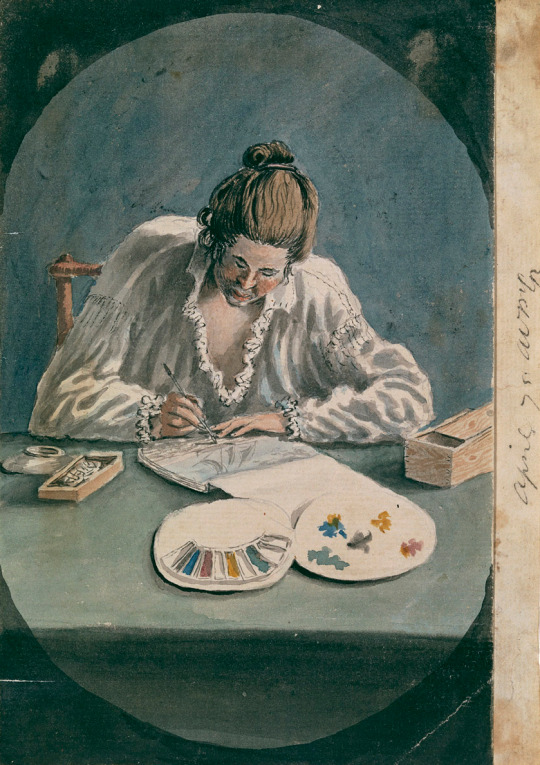
I found some interesting biographical information about our friend Lieutenant Gabriel Bray, shown above painting his self-portrait in April 1775 with his watercolours kit, in what is probably the wardroom of HMS Pallas (NMM).
If you're not familiar with Gabriel Bray's wonderful art depicting the world of the late 18th century Royal Navy, you're in luck! His pictures are priceless primary sources.
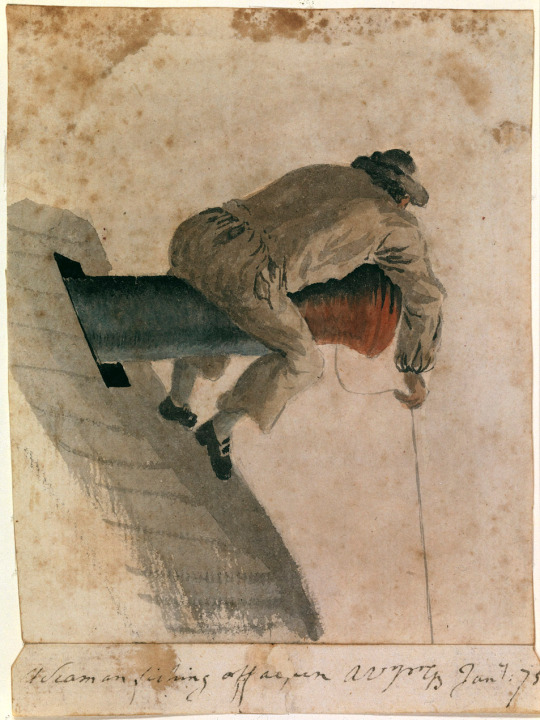
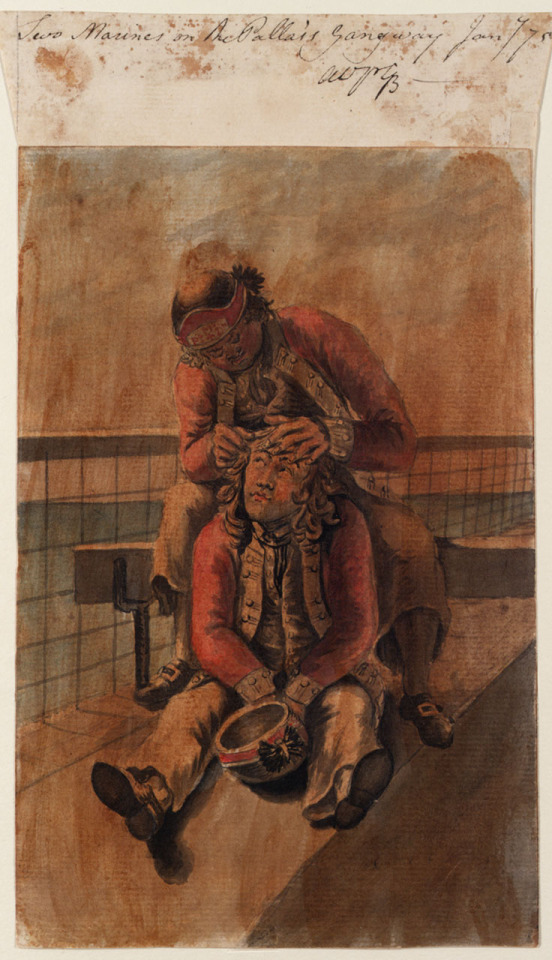
A sailor fishing off of a gun, and two Royal Marines, both from the Pallas album.
Bray is one of the seafarers in Huw Lewis-Jones' book The Sea Journal: Seafarers' Sketchbooks, which provides more information about his life than the National Maritime Museum, Greenwich:
The son of a mariner, Gabriel Bray joined the navy at fifteen as a captain's servant. In the first six years of his sea career he served on six different ships and managed to pass his lieutenant exams in 1770, but no ships were available for a posting. His lucky break came in 1773, when assisting on the royal yacht Augusta at the fleet review in Spithead. He secretly sketched the scene and, having sat up all night to finish the painting, then managed to have it presented to King George III the following day; the king apparently liked it so much he promoted Bray on the spot.
As a keen artist, Bray made numerous watercolours on his voyages to West Africa and Jamaica when lieutenant on the frigate Pallas. His commander was Sir William Cornwallis, later the well-known admiral 'Billy Blue', a friend of Nelson and commander of the Channel Fleet during the war with France. Lacking the right family connections, Bray never advanced beyond the rank of lieutenant, so settled instead for commands of the revenue cutters Sprightly, Enterprise, Nimble, and Scourge, defending the English coast against smugglers. [...] On one notable occassion it is said he even fought off a Frenchman wielding a blunderbuss. After all this drama, he spent his final years in Dorset, a happy churchwarden.
— Huw Lewis-Jones, The Sea Journal: Seafarers' Sketchbooks

'Sketch between Decks, May 75': midshipmen in the ship's cockpit reading and studying by candlelight, as Bray himself would have lived as a middie.
#age of sail#naval history#gabriel bray#royal navy#18th century#hms pallas#naval art#midshipmen#royal marines#sailors#idea to get yourself noticed: give a sketch to king george iii#stay up all night working on your creative projects! (relatable)#i would have loved to meet mr bray
76 notes
·
View notes
Text

A Royal Netherlands Marine during a bilateral training exercise at Riverine Training Area, Camp Lejeune, N.C.
The U.S. Marine Corps photo by Lance Cpl. John A. Hamilton Jr., 2D MARDIV Combat Camera (2015).
#Royal Dutch Marines#royal marines#army#military#US army#US military#armed forces#marines#hooah#semper fi#USMC#US navy#US marines#military life#infantry#army strong#troops#veteran#soldier#marine#patriot#operator#combat#paratroopers#tactical#tactical gear#tacticool#training#exercise#military 1st
25 notes
·
View notes
Text
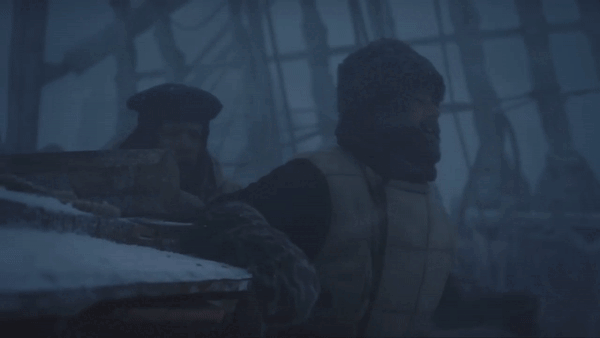

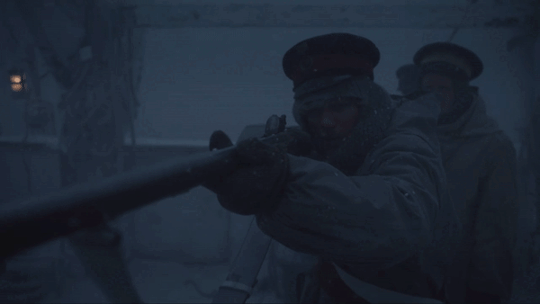
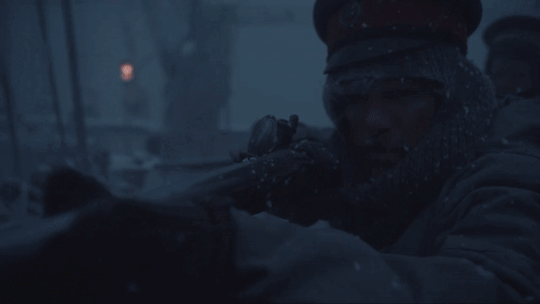

It's at the stern!
#I had a version of this but in really bad quality so here it comes again#the terror#the terror amc#solomon tozer#thomas blanky#marines#royal marines#my edits#my stuff#tozer just being brave as always#david walmsley#ian hart
76 notes
·
View notes
Photo

Sea chest and mini portrait of Captain James Johns, Royal Marines, who served aboard HMS Shannon during the action with USS Chesapeake, 1.June 1813
#naval artifacts#hms shannon#royal marines#captain james johns#before 1813#uss constitution#age of sail
71 notes
·
View notes
Text

And how could there not be a special photos of 𝗧𝗼𝗺 with a 𝐂𝐡𝐫𝐢𝐬𝐭𝐦𝐚𝐬 hat for this special day that is today, 25 December? 💖🎅🏻
𝐌𝐞𝐫𝐫𝐲 𝐂𝐡𝐫𝐢𝐬𝐭𝐦𝐚𝐬 everyone, I hope you have had or are having a beautiful day, as it should be 🎄🎁🌟
⠀⠀⠀⠀
¿Y cómo no iba a haber un especial de fotos de 𝗧𝗼𝗺 con un gorrito de 𝐍𝐚𝐯𝐢𝐝𝐚𝐝 por este día tan especial que es hoy, 25 de diciembre? 💖🎅🏻
𝐅𝐞𝐥𝐢𝐳 𝐍𝐚𝐯𝐢𝐝𝐚𝐝 a todos, espero que hayáis tenido o estéis teniendo un bonito día, como tiene que ser 🎄🎁🌟
⠀⠀
#tom hardy#edward thomas hardy#2013#selfies#tom hardy selfies#selfies de tom hardy#royal marines#fan pics#fotos de fans#navidad#feliz navidad#christmas#merry christmas#mis edits#my edits
12 notes
·
View notes
Photo

Royal Marines at a reenactment in Tenerife.
151 notes
·
View notes
Photo
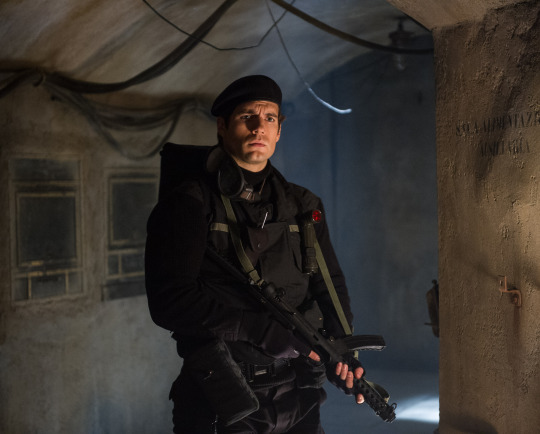
The Man From U.N.C.L.E. (2015)
#2015#film#movie#The Man From U.N.C.L.E.#Guy Ritchie#Henry Cavill#Napoleon Solo#Armie Hammer#Illya Kuryakin#Alicia Vikander#Gaby Teller#Elizabeth Debicki#Victoria Vinciguerra#Royal Marines#CIA#KGB#Italy#Sterling#SMG#spy
67 notes
·
View notes
Text
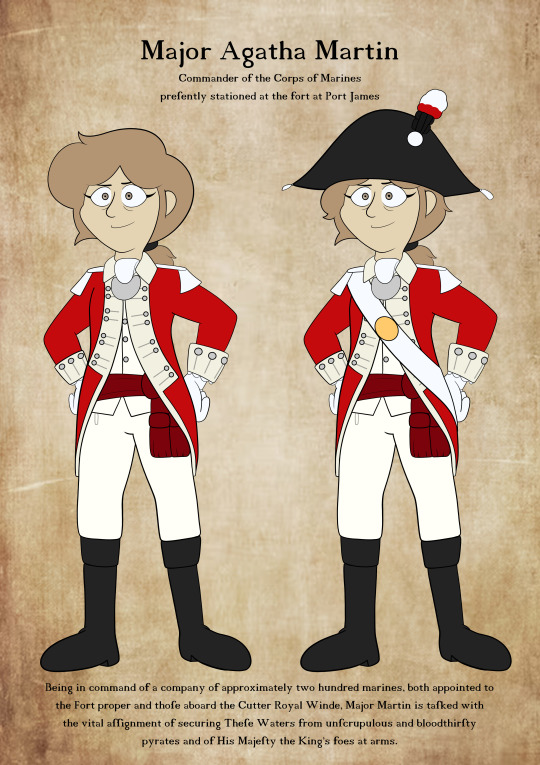
Doing a bit of character design. I'm a historian, I'm allowed to be historically inaccurate.
3 notes
·
View notes
Text
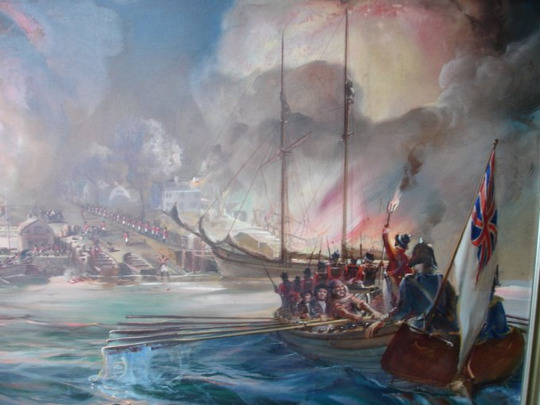
British troops attacking Maryland in 1814 (Star Spangled Banner National Historic Trail)
Both sides regarded the [War of 1812] as a second act in a drama launched by the American Revolution. During the new war, some British officers called the Americans “rebels,” as if they had not truly won their independence and the revolution was not yet lost to the empire. Because of the cultural overlap between Americans and Britons, similar people fought on both sides. British immigrants lived throughout the United States, and British forces included many sons of the Loyalist refugees from the revolution. “It is quite shocking to have men who speak our own language brought in wounded; one feels as if they were English peasants, and that we are killing our own people,” declared one British officer posted in the Chesapeake. He added, “There are numbers of officers, of the navy in particular, whose families are American, and their fathers in one or two instances are absolutely living in the very towns we are trying to burn.”
— Alan Taylor, The Internal Enemy: Slavery and War in Virginia, 1772-1832
The theme of feeling uncomfortable about attacking culturally similiar Americans—and their ships crewed by mostly British sailors—is a recurring one in British memoirs of the War of 1812. But it wasn't much of a deterrent to Admiral Sir George Cockburn, who repeatedly pillaged the Chesapeake region (before and after setting the White House on fire).
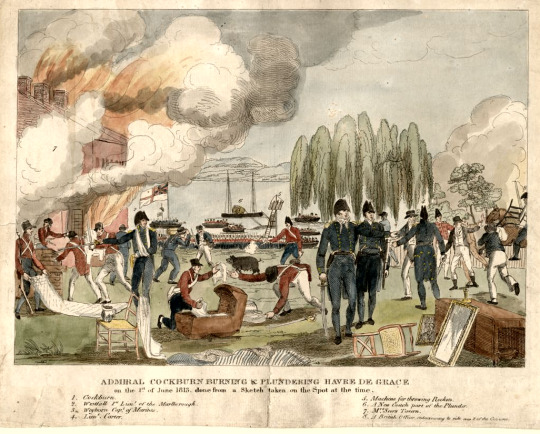
This 1813 print shows Admiral Cockburn and his entourage of sailors and Royal Marines burning and plundering Havre de Grace, Maryland (Brown University collection). For a partisan depiction of events no great atrocities are depicted, but we do get... REDCOATS ROBBING A CRADLE.

Those dastardly Brits! No baby cradle is safe! Alternate versions of this print go for an even more comic approach:
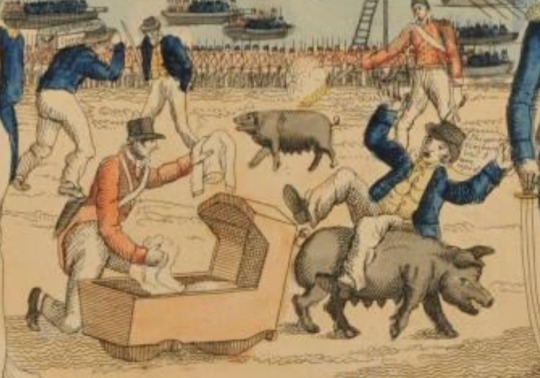
#War of 1812 Wednesday#war of 1812#age of sail#royal navy#redcoats#royal marines#sir george cockburn#chesapeake campaign#military history#canadians reading this are thinking 'WE actually robbed that baby cradle'
34 notes
·
View notes

